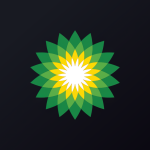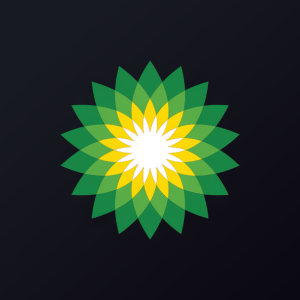Welcome to our dedicated page for Bp Plc SEC filings (Ticker: BP), a comprehensive resource for investors and traders seeking official regulatory documents including 10-K annual reports, 10-Q quarterly earnings, 8-K material events, and insider trading forms.
Deepwater decommissioning costs, shifting crude price assumptions, and ambitious net-zero goals make BP鈥檚 regulatory disclosures anything but light reading. Reserve replacement tables sprawl over dozens of pages, while environmental provisions hide in footnotes. Searching for the latest Gulf of Mexico liability estimate or renewable project spend can feel impossible. This page delivers BP SEC filings explained simply鈥攖urning document overload into clear, actionable insight.
Stock Titan鈥檚 AI-powered analysis ingests every BP quarterly earnings report 10-Q filing the moment it reaches EDGAR, flags margin swings, and pushes alerts for BP insider trading Form 4 transactions. Our engine also produces a BP annual report 10-K simplified digest you can read in minutes, links each BP 8-K material events explained notice to related press releases, and keeps BP Form 4 insider transactions real-time so you never miss executive sentiment shifts.
- Track BP executive stock transactions Form 4 before asset sales or dividend changes.
- Compare segment EBIT with AI-generated BP earnings report filing analysis.
- Review governance details inside every BP proxy statement executive compensation section.
- Save hours by understanding BP SEC documents with AI summaries and keyword search.
From offshore project updates to bp pulse expansion costs, our real-time feed covers all forms, amendments, and exhibits. Investors, analysts, and energy professionals use these insights to act quickly, gauge reserve health, and measure BP鈥檚 energy-transition spending鈥攚ithout sifting through thousands of pages.
BP鈥檚 2Q25 results show a sharp sequential rebound but mixed year-on-year trends. Underlying replacement-cost (RC) profit rose to $2.4 bn from $1.4 bn in 1Q25, aided by stronger refining margins, a solid oil trading contribution and normalized tax rate (36% vs 50%). Reported profit was $1.6 bn. Operating cash flow recovered to $6.3 bn (incl. $1.1 bn Gulf settlement) and net debt fell q/q to $26.0 bn, yet remains $3.4 bn higher than a year ago.
BP lifted the quarterly dividend 4% to 8.32 c and announced a $750 m buyback, targeting 30-40% of operating cash flow for shareholder returns. Reliability stayed high (refining 96.4%, upstream 96.8%). Five major upstream projects and 10 discoveries have been delivered YTD; divestment proceeds now total ~$3 bn toward the $3-4 bn 2025 goal. Structural cost cuts reach $1.7 bn against the 2023 base.
Guidance & capital frame. 3Q upstream output is expected to slip modestly; taxes paid will be ~$1 bn higher. 2025 capex is still guided at ~$14.5 bn within a $13-15 bn 2026-27 frame, and management reiterates the ambition to shrink net debt to $14-18 bn by end-2027. A new Refining Indicator Margin (RIM) replaces the former RMM, with a $1/bbl move estimated to shift annual underlying RC EBIT by ~$550 m.
BP has reported a material oil & gas discovery at the 100%-owned Bumerangue exploration well in Brazil鈥檚 Santos Basin. Drilled to 5,855 m in 2,372 m water depth, the 1-BP-13-SPS well penetrated an estimated 500 m gross hydrocarbon column in high-quality pre-salt carbonates spanning >300 km虏, making it BP鈥檚 biggest find in 25 years and its tenth discovery in 2025. The block was secured in Dec-22 on attractive PSC terms (80 % cost oil; 5.9 % profit oil).
Rig-site data indicate elevated CO鈧�; laboratory analysis and an appraisal program will follow, subject to regulatory approval. The discovery underpins BP鈥檚 plan to lift upstream output to 2.3-2.5 MMboe/d by 2030 and explore a potential Brazilian production hub, though commerciality, fluid quality and development costs remain to be tested.
BP鈥檚 Form 6-K discloses intensive buy-back activity and a governance update for July 2025.
Across 26 daily transactions from 1鈥�31 July, BP repurchased about 92.9 million ordinary shares under the buy-back programme approved at the 2025 AGM. Daily volumes ranged from 1.65 m to 4.5 m shares with volume-weighted prices between 365.8 p and 410.4 p. All shares will be held in Treasury. Small management dealings were also reported: CFO Kate Thomson acquired 5,795 shares via DRIP/ShareMatch and the CEO鈥檚 PCA purchased 1,314 shares.
Under Provision 4 of the UK Corporate Governance Code, BP addresses the 24.28 % vote cast against Resolution 3 at the April AGM. Investor consultations have informed the ongoing chair-succession process, culminating in the appointment of Albert Manifold as incoming chair; further detail will appear in the 2025 Annual Report.
- The July buy-backs demonstrate continued capital-return execution and should be accretive to EPS.
- Persistent minority opposition on governance matters signals areas for board engagement despite overall shareholder support.
BP (NYSE: BP) filed a Form 6-K announcing the appointment of Albert Manifold as chair-elect, succeeding Helge Lund. Manifold will join the board 1 Sep 2025 as non-executive director and assume the chair role on 1 Oct 2025, when Lund departs the board. The notice follows a 'rigorous global search' led by senior independent director Dame Amanda Blanc.
Manifold spent a decade as CEO of building-materials giant CRH plc (2014-2024), where he strategically reshaped the portfolio and emphasised cost efficiency, disciplined capital allocation and robust cash flow generation. He currently serves as a non-executive director at LyondellBasell and Mercury Engineering and remains an adviser to CRH and Clayton Dubilier & Rice. The filing states no additional matters require disclosure under UK Listing Rule 6.4.8R and designates the release as inside information.
The succession brings an experienced operator with industrial and capital-markets credentials at a pivotal point in BP鈥檚 energy-transition strategy; however, investors will monitor the new chair for continuity of strategic direction and capital-return discipline.


